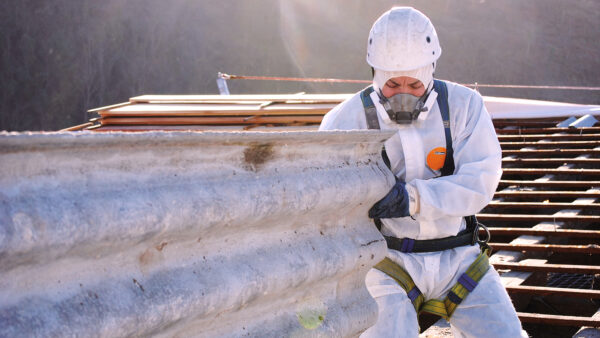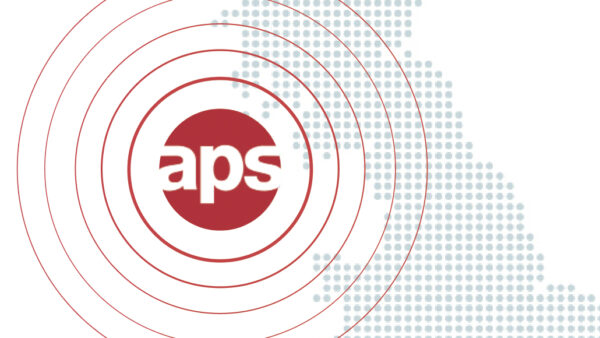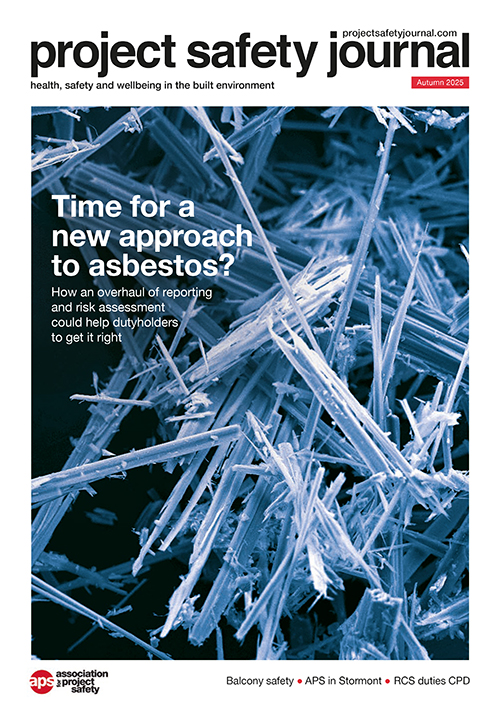
Worker safety on construction sites is paramount, so when it comes to concussion and other head injuries, can lessons be learned from contact sports like rugby and football? Does the construction industry understand enough about head injuries and protection? And is today’s hard hat technology enough to safeguard employees doing their job?
Ahead of Hard Hat Awareness Week during 12-18 June, a panel of experts, chaired by CM editor Will Mann, discussed these issues.
The panel
Chris Tidy, Hard Hat Awareness Week founder
Christopher Bentley, UK safety, health and environment manager, Morgan Sindall
Olof Rylander, senior business developer for safety, MIPS
Dr Mazdak Ghajari, lead researcher at the Head Lab, Imperial College London
Russel Pieters, senior sales manager, MSA Safety
Will Mann: What do you think of current understanding about head injuries in construction, including the ability to diagnose concussion?
Chris Tidy: We absolutely need a better understanding of what concussion is, given the number of head injuries there are in construction. And we not only need to understand more about how to try to prevent injuries, but we need to look at how we can go about reporting them better. I’d like to see greater awareness and education around head injuries, both in terms of trying to prevent them and reporting them when they happen.
Mazdak Ghajari: Concussion is certainly an emotive word. First of all, we need to understand what concussion is. It has certainly confused everyone in the sports industry, and much research has gone into defining the biomechanical threshold for what concussion is. We need to know what it is we are discussing; we need to ensure we are measuring the right things and that we are measuring them in better ways in order to improve protection.
Olof Rylander: How do you educate a team of subcontractors, numbering in their thousands, about when they need to go and see a doctor if they receive a blow to the head? One of the issues around concussion is that you don’t see the effects immediately. You might get hit on the head and think it’s not too bad, but the symptoms can take a few days to manifest themselves. People need to recognise when they should go to a doctor. Awareness and education are really important because in my experience the understanding of this issue is pretty low.
Russell Pieters: One of the issues is that RIDDOR – Reporting of Injuries, Diseases and Dangerous Occurrences Regulations – doesn’t provide enough space to report the detail of an injury. We need more data in there. And we need a better understanding of how and what gets reported. If I stand up and bang my head on a shelf, is that a reportable incident? It boils down to better understanding, better communication across the industry, as well as people wearing the right safety product for the situation, they are in.
Chris Bentley: I don’t think there is a great deal of knowledge in the industry around the diagnosis of concussion following head injuries. Of course, our project first aiders would be able to identify the more obvious symptoms of concussion, but maybe not the more subtle ones.
In most instances of a head injury the first aiders would direct the injured person to visit a medical professional, however in more subtle head injuries associated with trips and falls this may not be the case. Some improved knowledge on this through first aid courses etc would be useful.
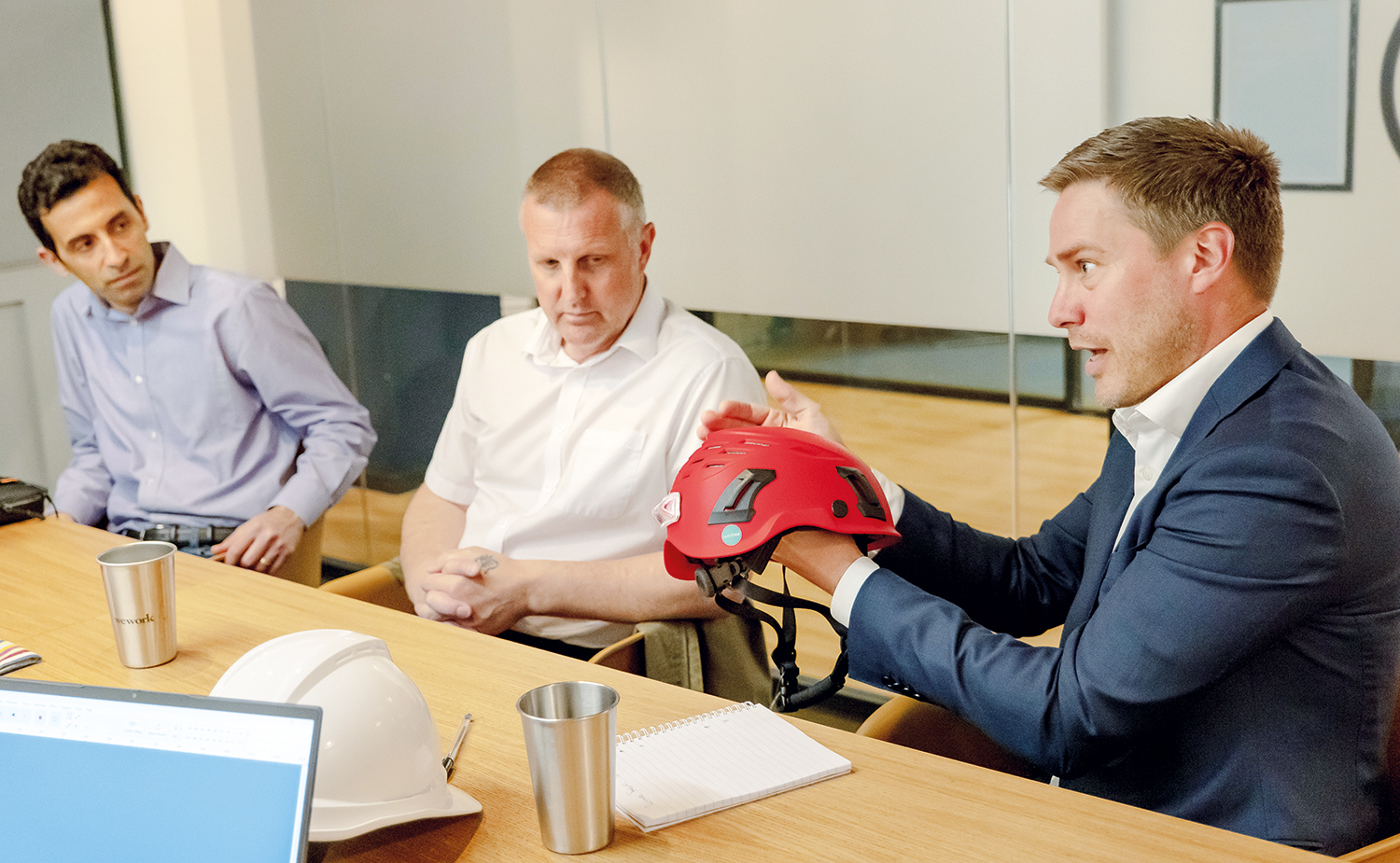
WM: Do you feel there is enough education around head injuries and head protection in general?
MG: The sooner we can start educating people, the better. From school age, even. There are many injuries, that affect all parts of the body. But injuries to the head and brain are really important. Yes, if someone breaks a leg, their mobility will be affected for a time, but what appears to be a relatively simple head injury can ultimately change someone’s life, their personality forever. It can take a long time for the effects to be evident, but sports like football and rugby now recognise the dangers. Maybe in the construction industry not so much. So educating people is crucial.
CT: It’s often a difficult topic to broach among children, those who might be put off playing rugby or cycling if you spend a lot of time telling them about concussion. But we should be doing it somehow. And definitely, from an industrial perspective, we need better induction procedures, and we need to spell out why people are being required to wear this kit and explain what it’s protecting against. Currently, we just tell people to wear stuff without going into the reasons why they should.
OR: Being a health and safety officer in a company must be a challenge. Head protection is just one part of safety, and you have an enormous number of different PPE products to choose from. When it comes to head protection equipment, we need to understand to what standard it has been manufactured. There are many products to choose from and given that contractors aren’t necessarily going to be experts in head protection, foot protection, and so on, it is essential to educate people on what is most appropriate for the tasks involved.
CB: When people think of construction-related head injuries, they automatically have an image of being struck by a dropped object. In my career as a safety professional, I have only seen two significant head injuries from this type of event, and some of the workforce may never have seen any which can lead to the belief that head injuries aren’t commonplace.
I think early education around the more subtle head injuries, such as those from trips and falls and striking your head on objects, and how to protect against them would only be a good thing.
CT: As Hard Hat Awareness Week, we’ve offered to come and talk to construction companies about head injuries, and they’re not interested. When you compare injuries occurring from dropped objects to those from slips, trips, and falls, yes, the latter causes of injuries are much higher. But mitigating the risk and informing people about it has to be good for everyone. It’s about educating people; it’s not about trying to sell health and safety gear. I find it interesting when people take that approach because that’s not what we’re trying to do. I’ve always been very clear; it’s about education, not sales.
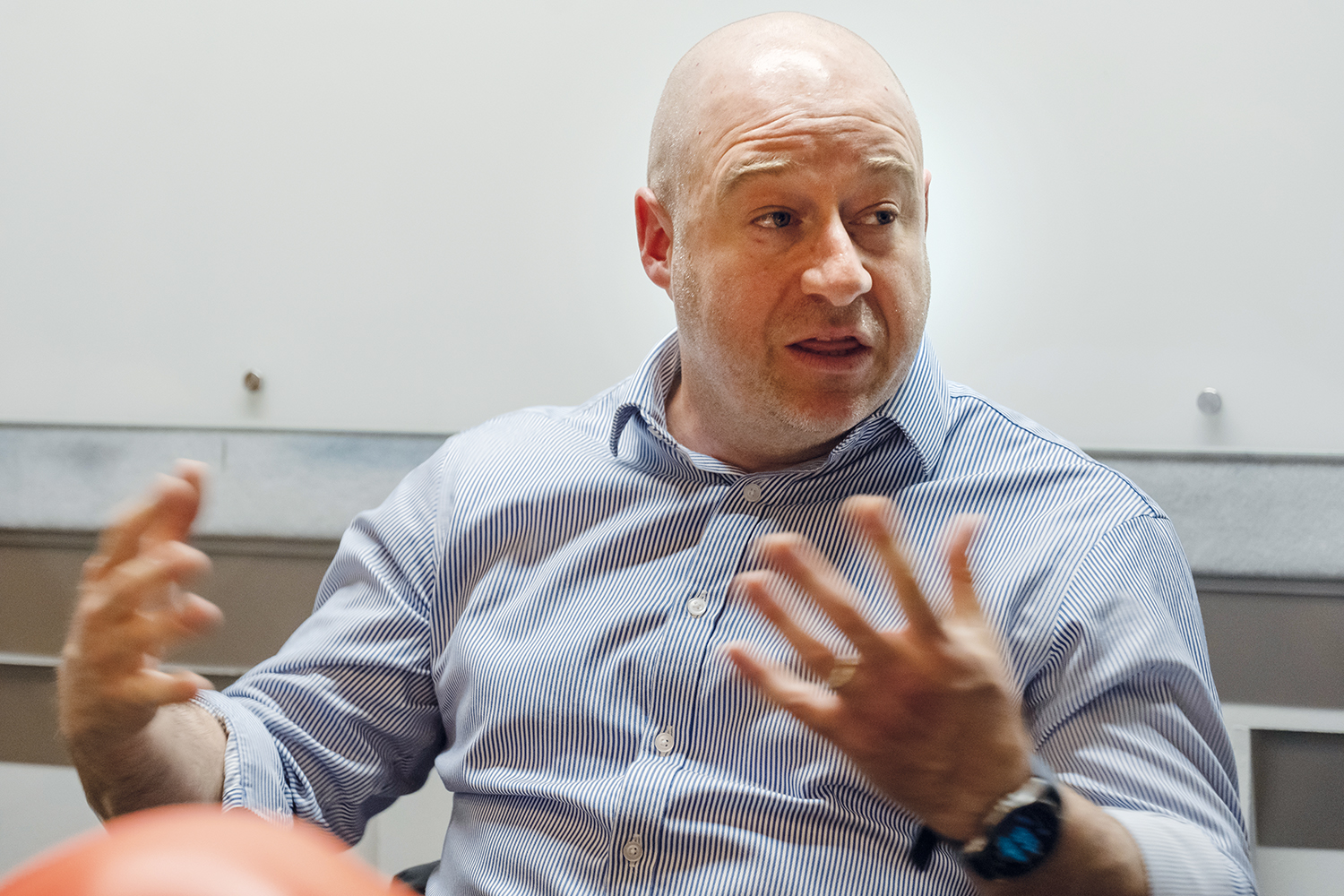
WM: What is your experience of good and bad practice in mitigating head injuries in construction?
CT: Obviously a lot more people are wearing hard hats than before, but there are still cases of bad practice where people don’t wear them properly, like putting them over hoodies. Chinstraps are essential in keeping a hardhat correctly in place, but they can be uncomfortable, so people don’t always do them up, which can cause the obvious issue of hardhats falling off and problems arising if something hits their head at that point. Hardhat safety will only be good for you if the product remains on your head.
OR: We need to manufacture helmets so that they are comfortable to wear. I come from the land of Volvo, and in Sweden, there are strict requirements for main and sub-contractors around wearing hard hats. And it’s not just Sweden. I was recently on a site in the US, in Kansas, where there were thousands of workers and every single one of them was wearing a hard hat with the chinstrap done up. The construction firm had a policy of: “You do up your strap, or you go home.” Sometimes it’s good to be tough on this.
Hard Hat Awareness Week runs from 12-18 June. Go to www.hardhatawarenessweek.com for more information on head injuries and good safety practices. Show your support by posting on social media using the hashtag #HardHatAwarenessWeek or #hhaw23
RP: I’ve seen some really bad examples of hardhat wearing. Hoodies, woolly hats, wearers putting stuff in between the hardhat’s liner and the shell. Crazy stuff. Having cooling liners helps. And chinstraps need to be of the right type. The product needs to be used correctly. If you’re not using it correctly, why use it all? In the UK, you have workers from many countries, and their understanding of UK safety processes may differ. It comes down to communication and again, education.
CB: I’ve seen people drill holes in their hardhat for ventilation, stuff oily gloves inside them which have resulted in skin irritations, or cover them with induction stickers, so you couldn’t tell if they were damaged. Thankfully that sort of thing rarely happens anymore. I think a worrying trend within the industry is the fitting of wearable technology, such as cameras, onto hard hats.
These products have not always been tested for compatibility by hard hat manufacturers, and the detrimental impact this may have on the level of protection of the hard hat is therefore not fully understood.
WM: Do you think that current safety helmets offer sufficient protection for workers, particularly for accidents involving ‘rotational motion’?
MG: That’s a very good question. From studies we’ve done, we can see that it’s rotation of the head, rather than linear motion, which produces the greatest shear to the brain. Both we and MIPS have been doing testing around this, but more work needs to be done. In parts of the testing chain, there are elements missing. We need better data to better inform our lab tests. This can lead to better lab testing of a wider range of helmets with different features. The key is now how we design the lab test to best approach that. And for that to succeed we need data.
CB: I’m not hugely familiar with the term ‘rotational motion’, and I’m not sure that the industry, in general, is fully aware of the risks associated with the issue. An educational element here needs to be addressed to improve the industry’s understanding of rotational motion risks and how they can be reduced through innovation within head protection design.
OR: To explain the rotation motion that we’re talking about, the brain fills up most of the skull. With linear movement, the brain won’t move much in relation to the skull, and there’s little strain on the brain. But with rotational motion, the brain can start to rotate inside. And if that rotation is large enough, it can result in shearing of brain tissue, and that’s why those rotational motions can prove to be dangerous.
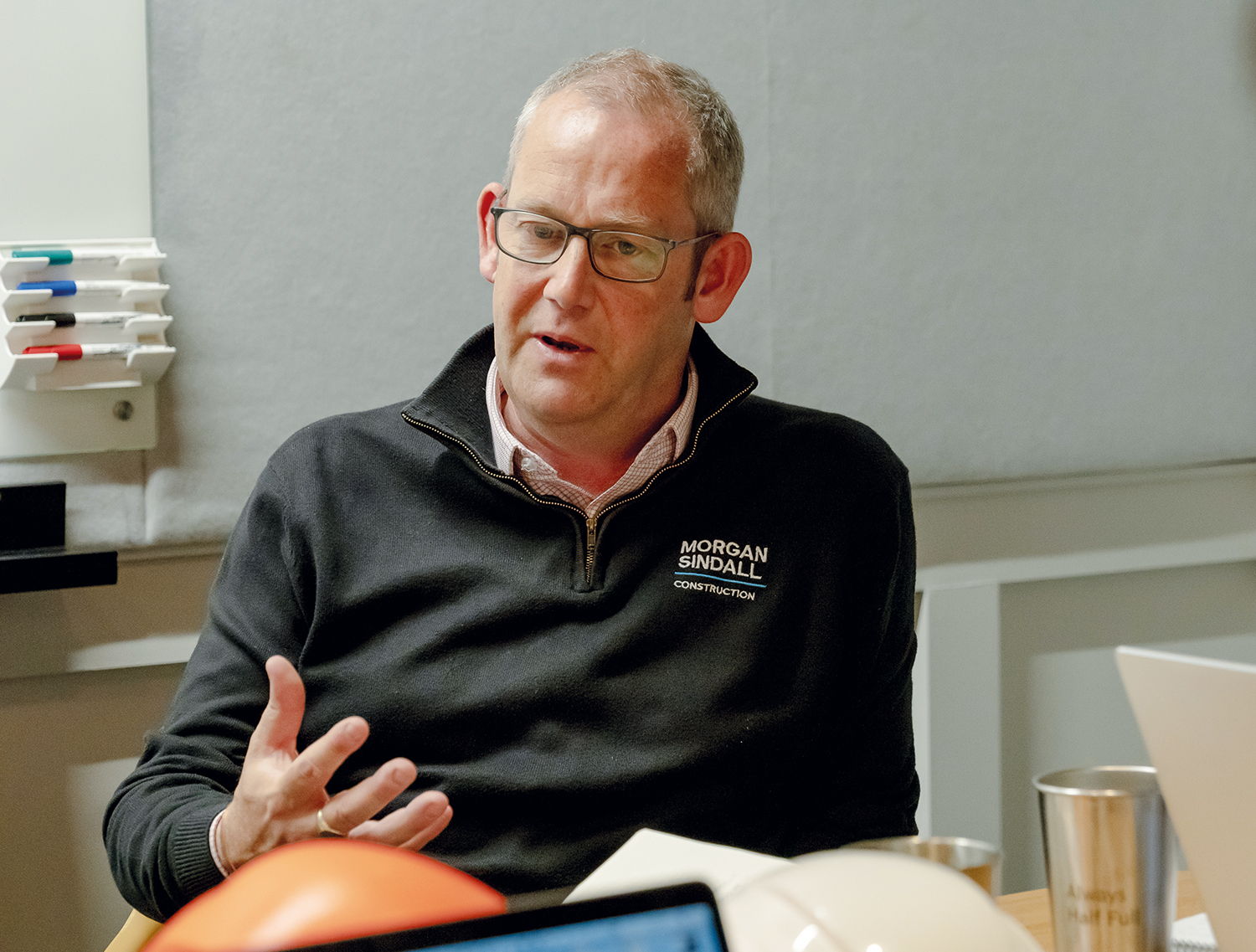
CT: As with most activities it comes down to the data. It’s also about understanding the incidents that are taking place and tailoring helmets, hardhats, to those situations. Currently, we just don’t have a 100% clear picture of the types of incidents that are taking place. Helmets are just tested for linear impacts only. We have to lift standards beyond the basic requirements to the point where manufacturers attain standards that meet rotational as well as linear impacts.
OR: We definitely need more data to understand what’s going on. But in the multiple tests we’ve done, we’ve seen that most of the impacts have a combination of linear and rotational forces, which happens in the real world on a construction site. And studies have shown that rotational impacts have a greater impact on the brain. Then, in my opinion, there is movement on the market with new helmets and technology coming which is nice to see.
RP: From our R&D perspective we’re constantly assessing different technologies that can be used for a range of impact situations, from rotational movement to top and side impacts. We look at arc flash protection and temperature stress, particularly when working in extreme hot and cold conditions. But then you run into the issue of procurement.
A company’s procurement team has a tough job because their health and safety team wants the best product, and they have to work with the budgets they have. Educating people about the risks and how to protect against them should also extend to those non-site staff who don’t experience the scale of the risks involved.
This round table has been produced by Construction Management in association with Hard Hat Awareness Week








